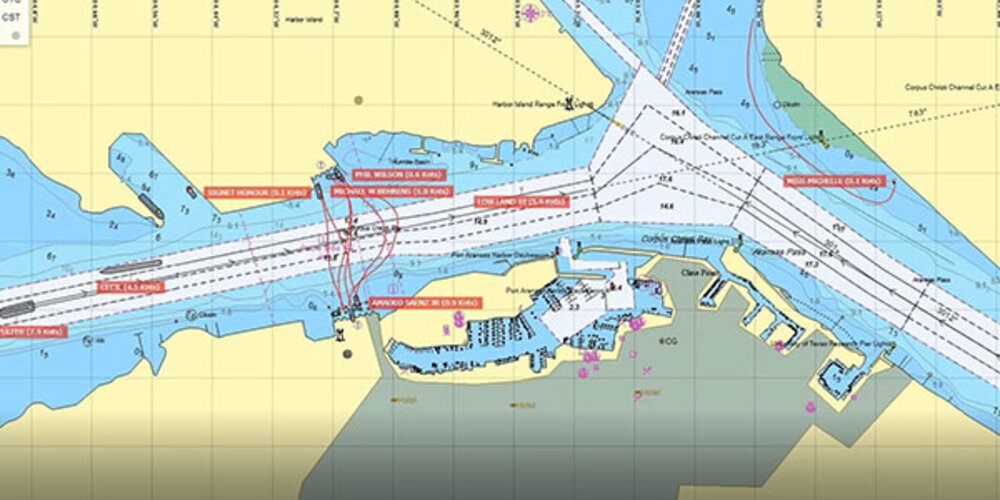Browse our services
Explore how Brookes Bell can help you
Find an expert
Meet our team, find and expert and connect
Contact us
Get in touch, we're here to help

Brookes Bell has long held a reputation for being the ‘go to’ firm for casualty investigation. Our Master Mariners have direct command experience of handling a diverse range of ships and are regularly instructed to advise on a range of incidents including collisions and groundings, salvage and wreck removals, dock allisions, speed and consumption disputes and stowage and securing assessments.
Daniel Millett is a senior master mariner with 14 years of experience at sea, including command experience serving on a diverse range of ships. He works as part of Brookes Bell’s team of experts instructed by P&I Clubs, shipowners, charterers and lawyers to investigate marine incidents.
Daniel’s years of experience at sea gives him a solid understanding of the bridge team management and the navigational practices which might underly marine casualties, but it’s combined with industry-leading technology which supports his analysis, investigation and understanding of any marine incident. Here he talks about some of the tools he uses when conducting a comprehensive navigational analysis.
Today, most vessels are fitted with Voyage Data Recorders (VDR), Electronic Chart Display Information System (ECDIS), VDR and are Automatic Identification System.. With modern technology this means we can start our investigation as soon as we’ve been instructed by the client.
Using MSG’s Prospector software, we can download the AIS positional data going back to 2005 for more than 230,000 vessels almost instantly. This means that just hours after receiving a call instructing us to investigate, we can have assembled the first overview replay of the vessels’ exact manoeuvres at the time and location in question. Thanks to the Prospector software, it usually takes only four hours from the AIS being transmitted from the vessel to the data being available for analysis.
The Prospector database also provides the weather – both the forecast and the actual weather, together with the oceanographic and tidal data, which includes prevailing winds, sea state and wind waves – and all of this can be combined in a replay animation. It’s a huge head start and makes a real difference to our investigators on site.
How are we using it?
Recently, we were investigating for a client whose vessel, may or may not have damaged an ocean cable. The cable company could say that the fault occurred on this day at this location. We were able to track all the vessels that had been in the area within a 1m radius – we can even pull off heat maps to show the density of traffic at any time on any day.
We were then able to refine the search to filter out vessels of a certain type, size, tonnage, length and draught. We were able to animate the data in a video format and identify whether the damage had or hadn’t been caused by the vessel in question.
We have investigated a ship collision in a lock. Using Prospector, we could pull off all the information, assemble the video replay and then our colleague who was actually on the scene, could show it to the Master, to ask more pertinent targeted questions.
Our Marine Engineers are using the data for vessel performance analysis for ships, to examine vessel efficiency at variable speeds. Using the traffic density heat maps, we can identify the container vessels in a particular area over a certain TEU size. We can then compare the number of vessels who took a certain route – for example via the Cape versus those that took the Panama Canal.
Prospector is not our only source of information though; most vessels now have ECDIS and VDR. It’s not as immediately accessible though. But once we have it, using our MADAS (Marine Accident Data Analysis Suite) software we can combine any ECDIS, VDR, CCTV, GPS, engine movement and radar information, adding another level and layer of understanding to our analysis.
These are two exceptional tools for marine accident investigation, before they came along, marine investigators would have been examining paper charts and using interview reports to establish a chain of events.
This is not only quicker, but exponentially more accurate. Having said that, the technology alone is not enough. Our confidence comes from industry leading software and our highly skilled experienced Master Mariners, who apply their many years of experience and knowledge to any investigation. It’s considerably quicker to establish the true facts, which means we can turn around more investigations for clients quicker. And a more efficient system with industry leading software, means more competitive pricing for clients.